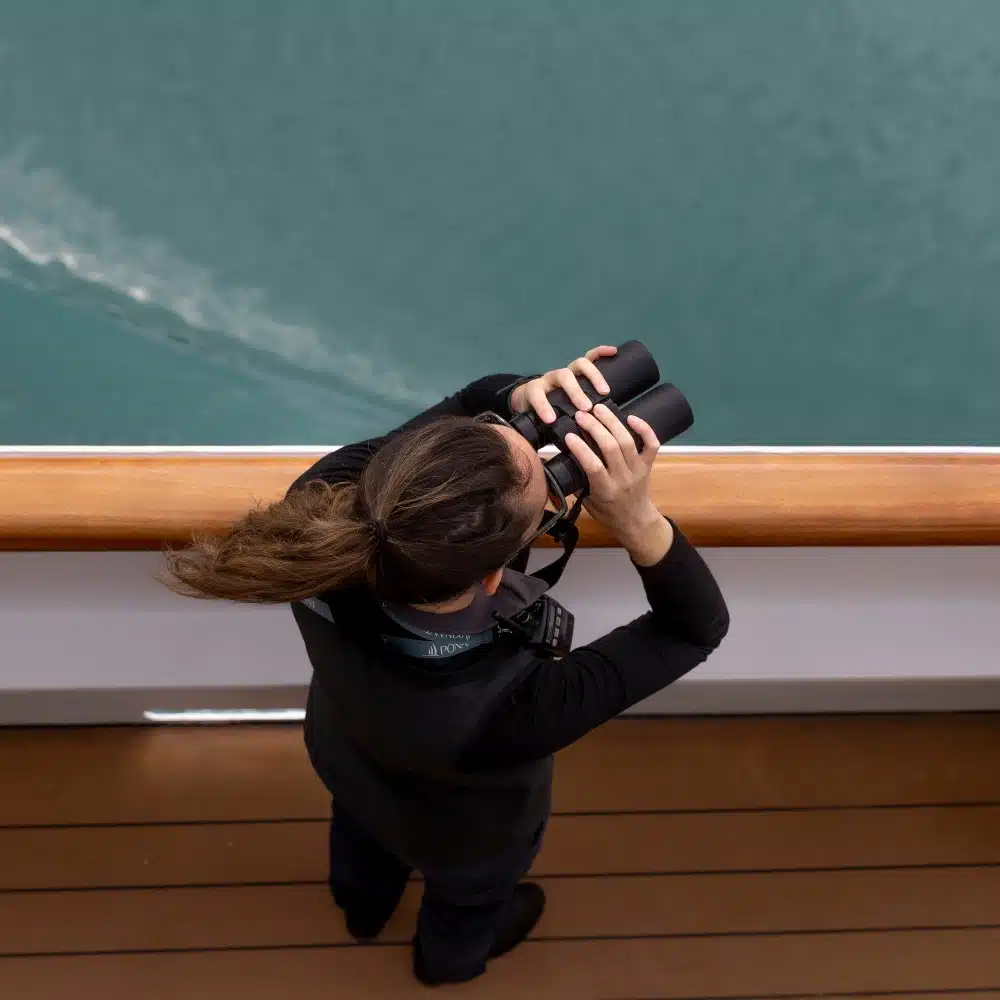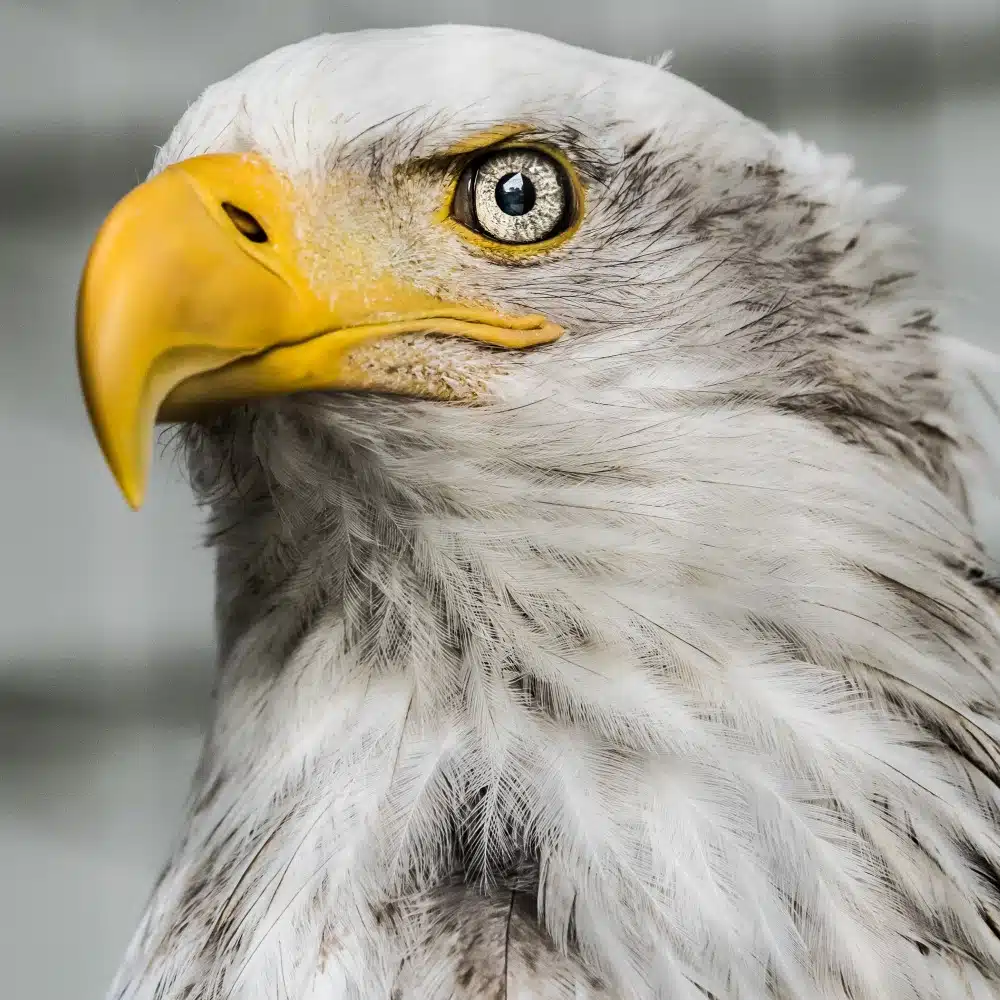When you sail into the wilderness of Alaska, you don’t want to miss a thing. That’s why PONANT is collaborating with The Explorers Club to bring you closer to the incredible wildlife that calls this majestic wilderness home. We hope you’ll join us on our luxury expedition aboard the elegant Le Soléal to witness Alaska, Nature on a Grand Scale.
The Explorers Club member Dr. Jessica Glass fell in love with Alaska when she was just six years old. Little did she know that her adult interests would take her on Iditarod training runs with dog sleds, onto commercial fishing boats in the Bering Sea, and to Yale and South Africa to study genomics. Today, she examines DNA sequences to understand how receding glaciers will affect sea life.
Isabelle Groc, a fellow member of The Explorers Club, writes about and documents through photography and film the fragile relationship between humans and nature. An award-winning writer and filmmaker, she believes that storytelling through her media is a window to understanding and to conservation.
It’s an honor to have these two trailblazing women along as we encounter the marine life and land-based wildlife of Alaska. While at sea, they’ll not only work with our onboard naturalists and keep their eyes open for some of the remarkable creatures that roam the Inside Passage, Prince William Sound, and the shores of the many bays, sounds, and fjords we explore, they’ll also share their work with you during illuminating talks and presentations. Your time with them is sure to illuminate this spectacular natural world, the myriad ways it is changing before our eyes, and the impact those changes will have on the creatures of Alaska.
Here is some of the wildlife we’ll watch for:
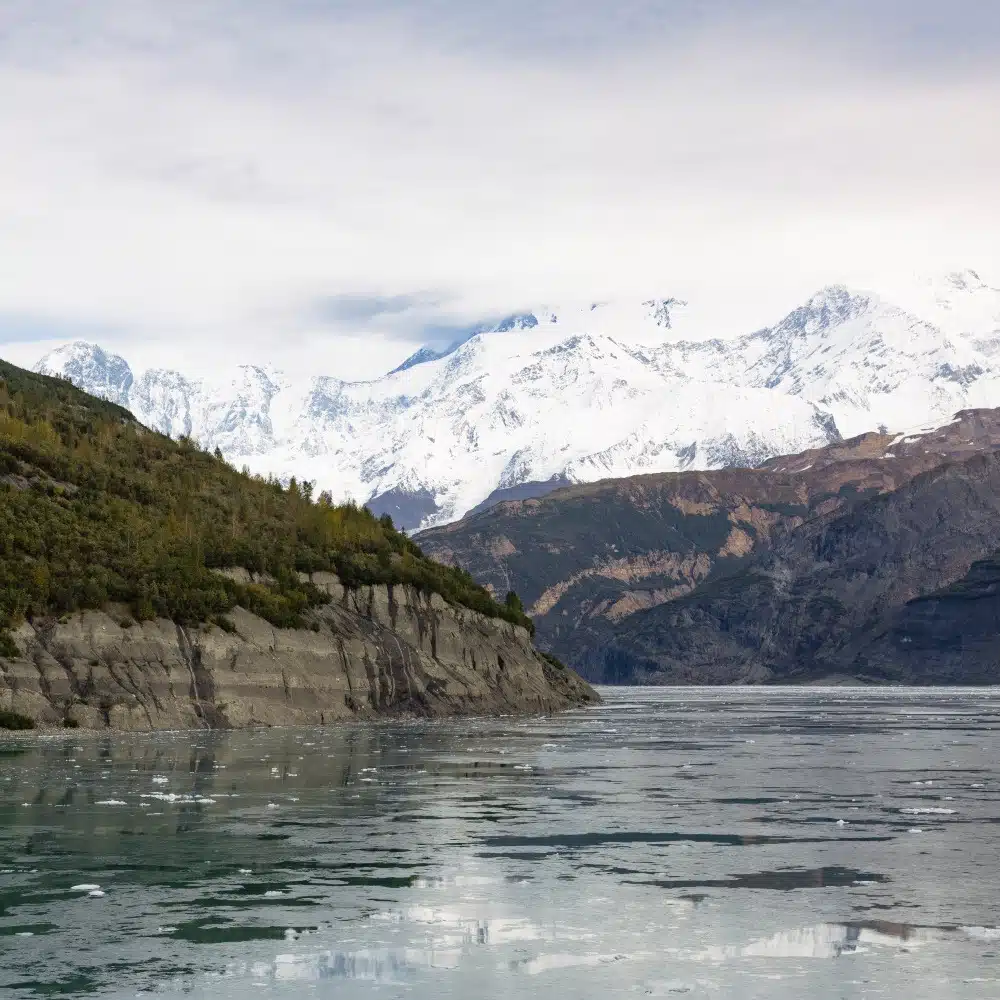
Meet Two Trailblazing Women
The Explorers Club member Dr. Jessica Glass fell in love with Alaska when she was just six years old. Little did she know that her adult interests would take her on Iditarod training runs with dog sleds, onto commercial fishing boats in the Bering Sea, and to Yale and South Africa to study genomics. Today, she examines DNA sequences. To understand how receding glaciers will affect sea life.
Isabelle Groc, a fellow member of The Explorers Club, writes about and documents through photography and film the fragile relationship between humans and nature. She believes that storytelling through her media is a window to understanding and to conservation. She is now an award-winning writer and filmmaker.
It’s an honor to have these two trailblazing women along as we encounter the marine life and land-based wildlife of Alaska. While at sea, they’ll not only work with our onboard naturalists and keep their eyes open for some of the remarkable creatures that roam the Inside Passage, Prince William Sound, and the shores of the many bays, sounds, and fjords we explore, they’ll also share their work with you during illuminating talks and presentations.
Your time with them is sure to illuminate this spectacular natural world. The myriad ways it is changing before our eyes, and the impact those changes will have on the creatures of Alaska.
Here is some of the wildlife we’ll watch for…
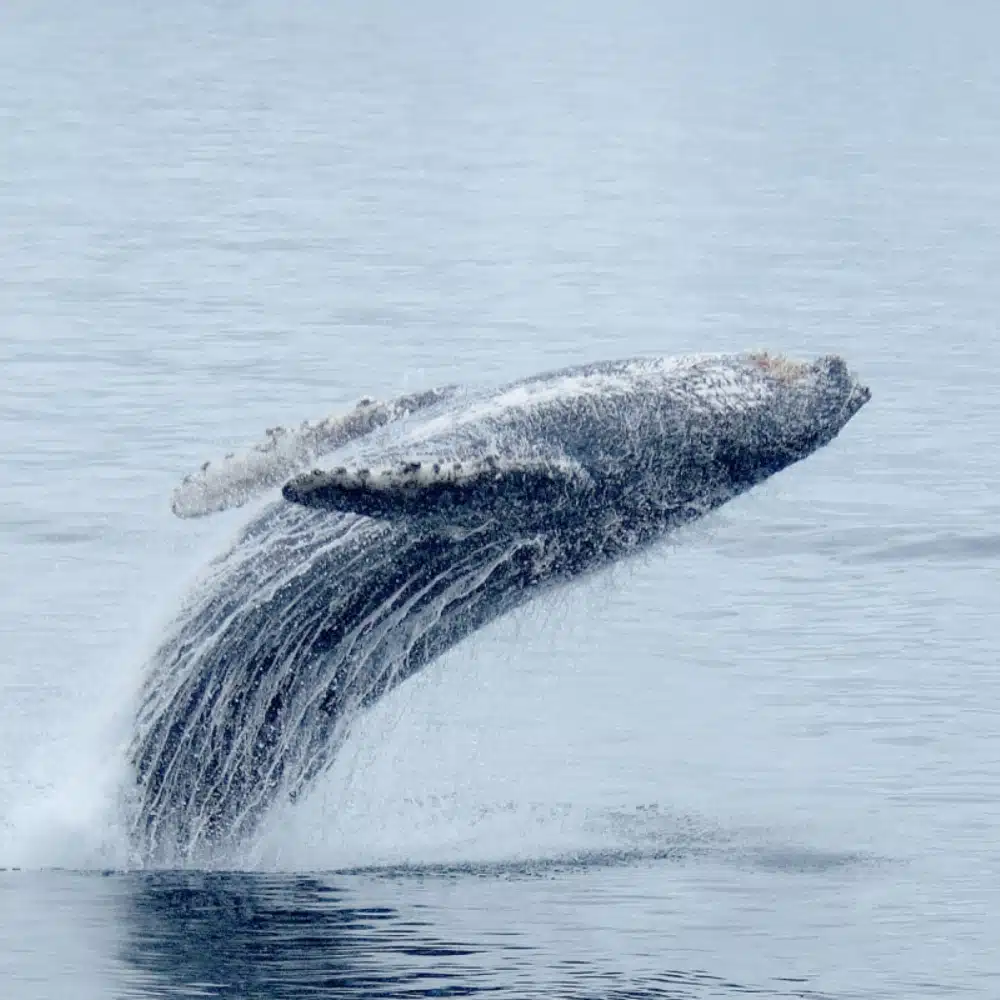
Whales: Giants of the Northern Seas
Perhaps Alaska’s most iconic creatures are its majestic whales. Cold, nutrient-rich oceans provide an ideal habitat for several species. Including the humpback, orca, gray, and beluga.
One of the most thrilling sights is a breaching humpback or gray whale. A common occurrence we may well witness. These gentle giants are renowned for their mesmerizing songs. Scientists have long studied these songs for their mysterious meaning, though the gray whale emits a much lower frequency. Each summer, they arrive in Alaska to gorge on the abundant plankton, krill, and small schooling fish. This is in preparation for their long winter journey to warmer waters. Humpbacks to Hawaii and grays to the waters off Baja, Mexico.
Orcas are apex predators of the sea. Meaning they’re at the top of their food chain. Known for their intelligence and complex social structures, they exhibit pack-like behavior to prey on marine mammals. Including seals and sea lions. Their striking black and white colors are a common sight in Alaskan waters.
The beluga whale, on the other hand, sports a bright white skin and distinctive rounded forehead. Sometimes called a “melonhead.” Its diverse vocalizations have earned it another nickname: the “canary of the sea.” These whales are known for their curious and sociable behavior. Making them a delight to encounter in the cold waters off Alaska.
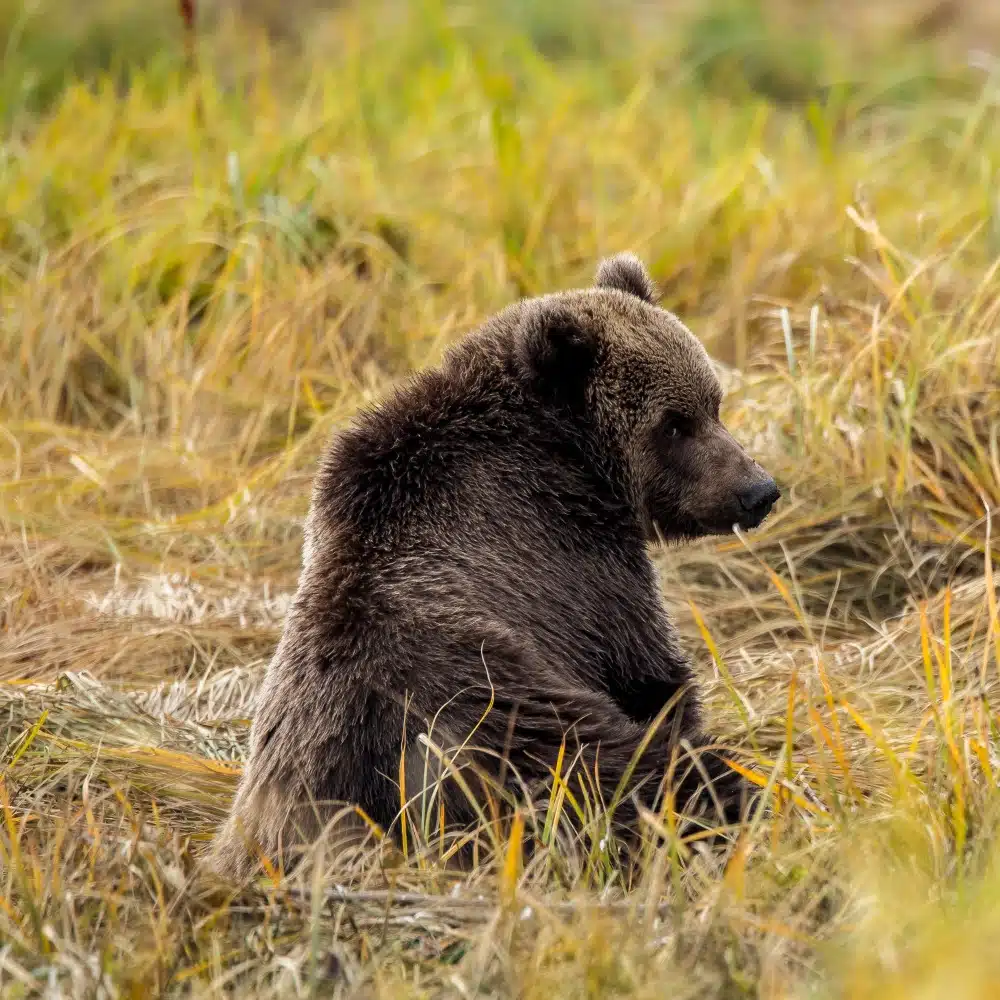
Black and Grizzly Bears: Shadowy Residents of the Forest
Alaska’s dense forests and rich salmon streams provide the ideal habitat for its most enigmatic residents, black bears and grizzly bears.
Despite their name, black bears could exhibit any number of colors, from black to brown, cinnamon, and even blonde. They are famously solitary and reclusive – and smaller and less aggressive than the grizzly. Grizzly bears, a subspecies of the brown bear, are true giants of the Alaskan wilderness. Their massive hump of muscle and fur on their shoulders distinguishes them from other bear species. They are top-tier predators, with a diet that includes berries, roots, and occasionally small mammals.
Bears in Alaska are most famous for their taste for salmon. While thousands of fish swim upstream from the ocean to spawn, the bears congregate along rivers to feast on the bounty, catching the fish with surprising grace as they leap over rapids. The ursine predators also play a crucial role in maintaining the balance of their forest ecosystems. For instance, they aid in seed dispersal through their consumption and deposit of berries and other plant matter; stir up the soil as they forage, bringing up nitrogen from lower soil levels and increasing plant diversity; and they leave salmon carcasses behind, which provide nutrients to the soil.
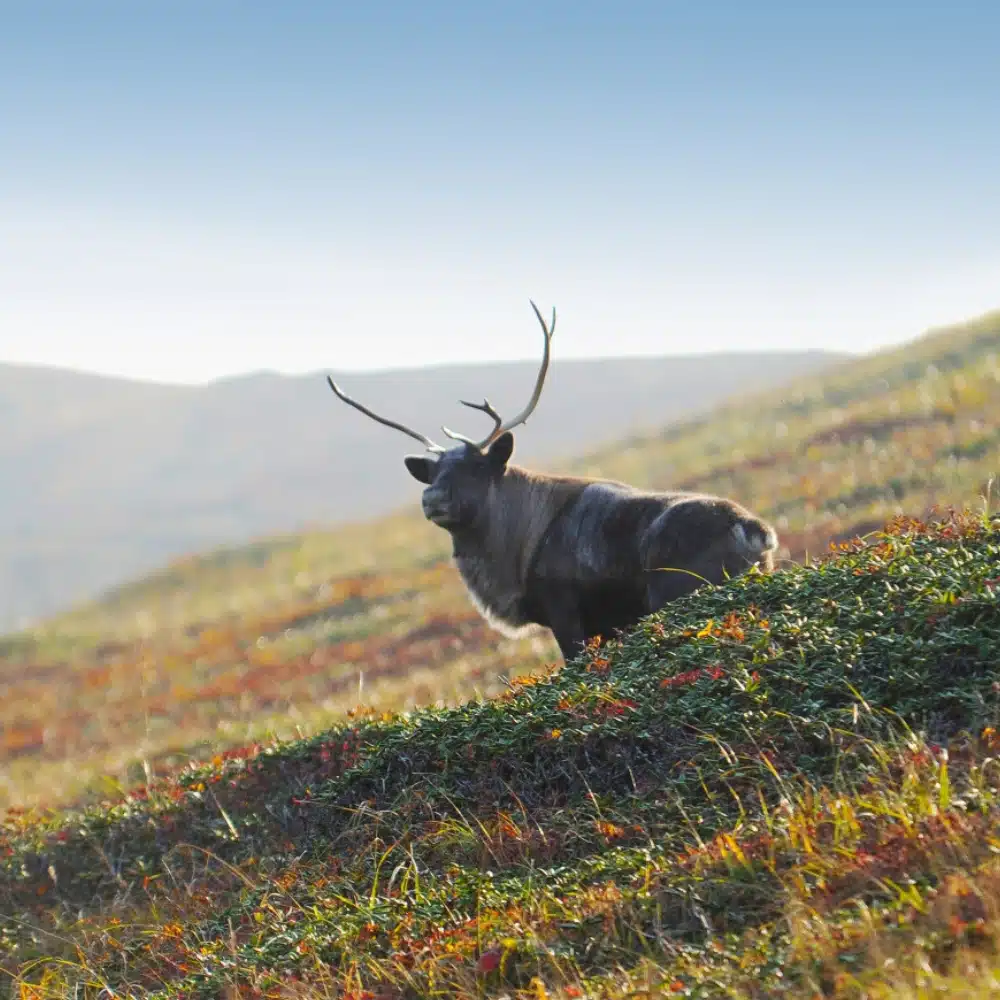
Moose: Kings of the Northern Forests
The tallest and second-largest land mammal by mass in North America, the moose is perfectly adapted to the harsh northern climate. Their long legs enable them to traverse deep snow, and their large, distinctive antlers are used for both foraging and defense. Unlike other deer species that form herds, the moose becomes solitary at about 18 months, when its mother chases it away. These lumbering solitary creatures are commonly spotted in Alaskan forests, wetlands, and near lakes, though they sometimes step into our sight when they emerge from a coastal woodland. It might come as a surprise that these massive animals are herbivores, browsing on woody vegetation such as willow, birch, and aquatic plants.

Bald Eagles: Rulers of the Skies
In addition to scouring the seas and the shores, you’ll also want to cast your gaze to the skies and the treetops that tower over the coast. That’s where you’ll spot the bald eagle, an apex predator of the Alaskan skies. Known for its distinctive white head and tail and razor-sharp talons, this majestic bird of prey is a powerful and agile hunter. Alaska is home to the largest population of bald eagles in the United States, and their presence is a testament to the state’s thriving fish populations. Bald eagles are often seen soaring over rivers and lakes, searching for their primary prey. They might also be seen scavenging carrion and stealing food from other birds. In Alaska, the life cycles of eagles are closely tied to the salmon runs. Like the grizzly bears, they gather in large numbers to take advantage of the abundant fish or to feed on spoils left by bears.

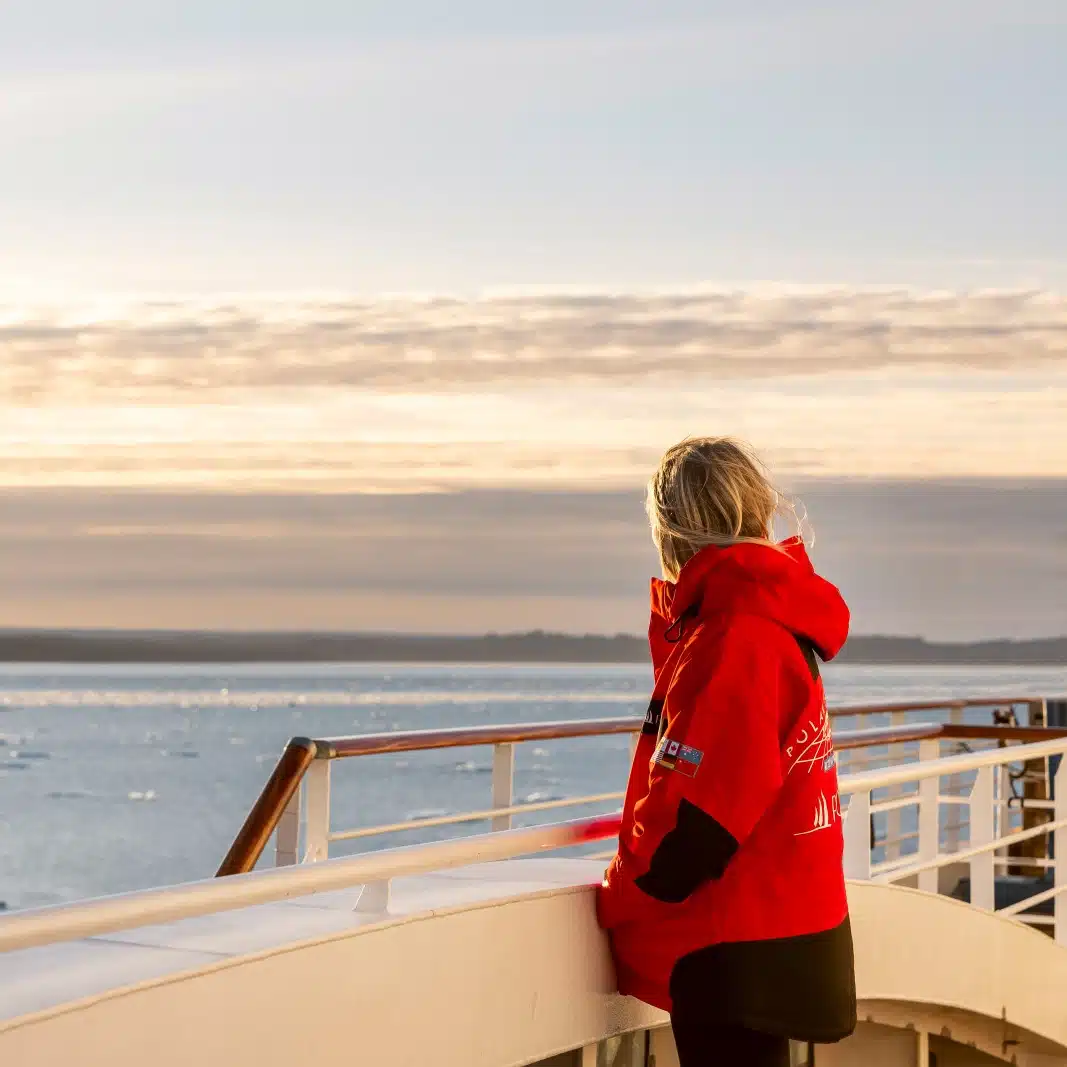
Discover America’s Last Frontier
The Explorers Club hosts and PONANT can’t wait to discover Alaska’s magnificent wildlife with you. Won’t you join us?


